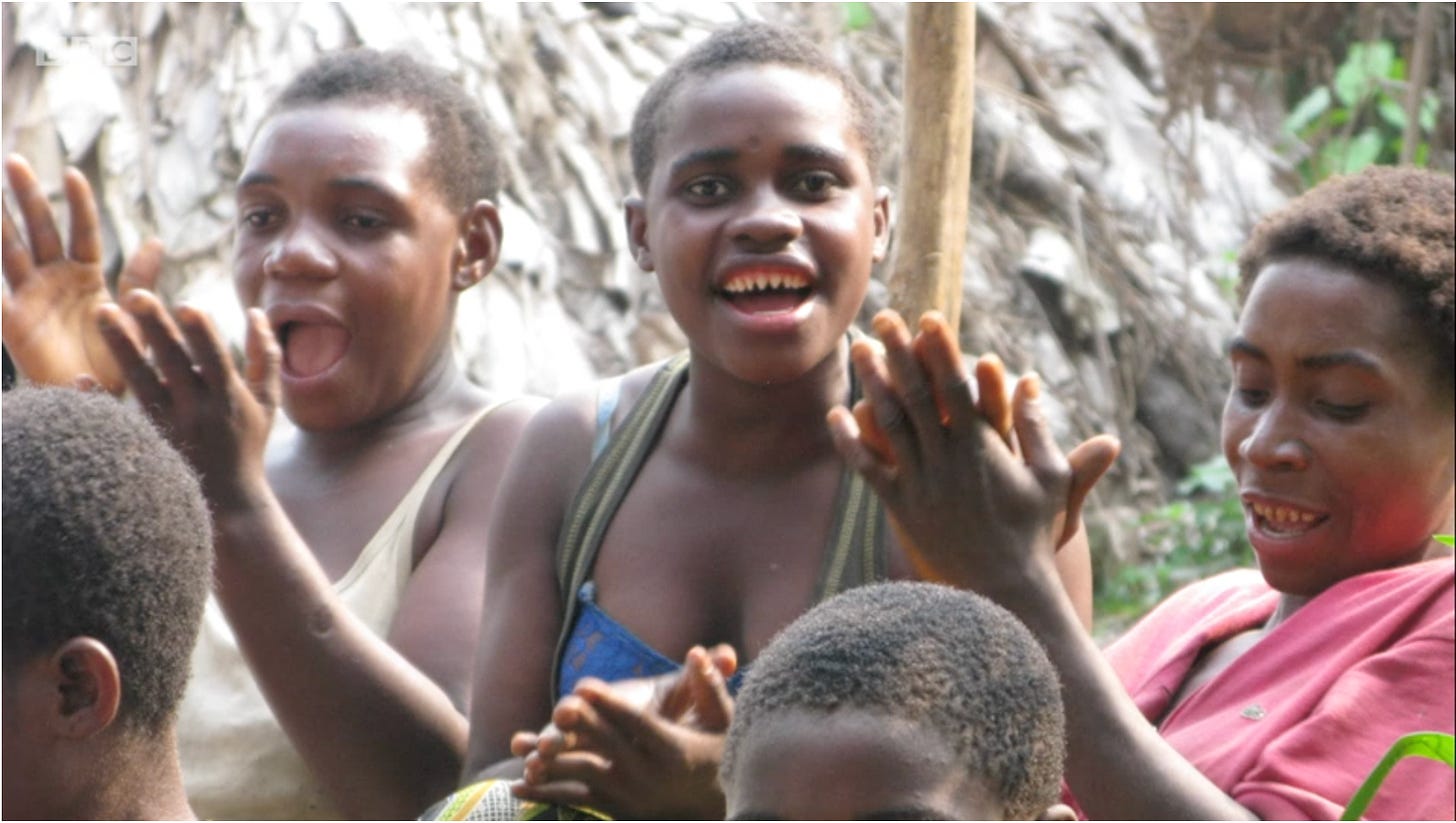
I am fortunate to be chairing a public talk with Merlin Sheldrake on 7 December. The occasion is the publication of an illustrated edition of his book Entangled Life. There’s a remarkable passage in this altogether remarkable book in which fungi and music intertwine. Sheldrake refers to ‘ Women Gathering Mushrooms’, a recording “made in the mid 1980s” by Louis Sarno of the music of the Aka (also known as Bayaka or Babenzele) who live in the rainforests of the Central African Republic/Congo:
As they wander around collecting mushrooms, their steps tracing the underground form of a mycelial network, the women sing amid the sounds of the animals in the forest.
Each woman sings a different melody; each voice tells a different musical story. Many melodies intertwine without ceasing to be many.
Voices flow around other voices, twisting into and beside one another.
‘Women Gathering Mushrooms’ is an example of musical polyphony. Polyphony is singing more than one part, or telling more than one story, at the same time. Unlike the harmonies in a barbershop quartet, the voices of the women never weld into a unified front. No voice surrenders its individual identity. Nor does any one voice steal the show.
Mycelium is polyphony in bodily form… There is no main voice. There is no lead tune. There is no central planning. Nonetheless, a form emerges.
Whether this is accurate I’m not sure. To my ears, there is an element of call and response, at least in the recordings I have heard. In all events, it’s beautiful idea. Sheldrake continues:
Whenever I listen to ‘Women Gathering Mushrooms’, my ears find their way into the music by choosing a single voice and riding with it, as if I were in the forest and could walk up to one of the women and stand next to her. To follow more than one line at a time is hard. It is like trying to listen to many conversations at once without flicking from one to another. Several streams of consciousness have to commingle in the mind. My attention has to become less focused and more distributed. I fail every time, but when I soften my hearing, something else happens. The many songs coalesce to make one song that doesn't exist in any one of the voices alone. It is an emergent song that I can't find by unravelling its music into its separate strands. Mycelium is what happens when fungal hyphae - streams of embodiment rather than streams of consciousness - commingle.
Am I listening to the wrong recording? The one I find online is Women Gathering Mushrooms - Babenzele Pygmies: Music of the Babenzele pygmies and sounds of their forest home. Recorded by Louis Sarno and Bernie Krause Ellipsis Arts – CD3490, 1995. (via The Book of Music and Nature: An Anthology of Sounds, Words, Thoughts, edited by David Rothenberg & Marta Ulvaeus.) Here is a different from the 2013 film Song From The Forest:
Here is a recording from 1977 via Smithsonian Folkways:
How much longer will we hear these songs? In A Battle to Protect Forests Unfolds in Central Africa’ published in The New York Times in January 2020 and updated in February 2021, Jack Losh notes “the ancient polyphonic chorus has changed little over 30,000 years but could be silenced by intensifying pressures.”
NOTA BENE
We are approaching the half way point for a Kickstarter for an audio edition of A Book of Noises. It’s great to have come so far thanks to many generous pledges, but there is still a mountain to climb. Please, if you haven’t done so already, make a pledge of £20 ($25) or more, and be among the first to receive the audiobook — plus my HUGE THANKS. Smaller pledges are welcome too!



